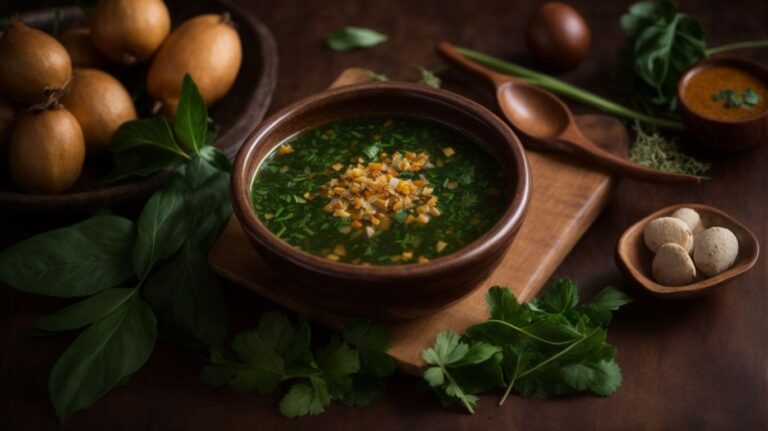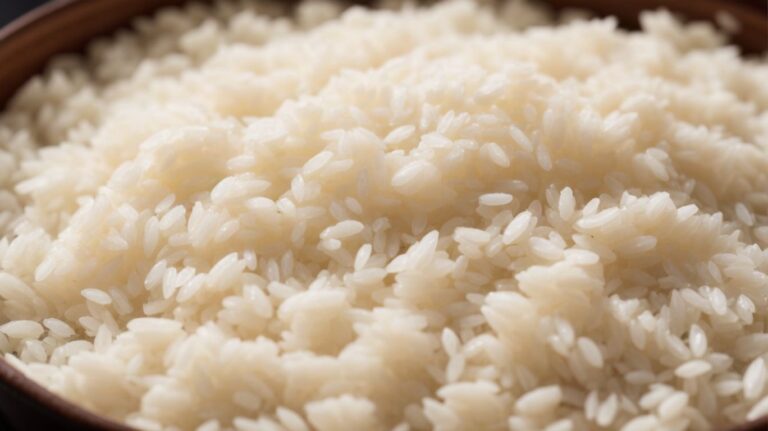How to Cook Bok Choy for Ramen?
Looking to add a healthy and delicious twist to your ramen dishes?
Bok choy is the perfect addition!
Discover the nutritional benefits of bok choy and why it complements ramen bowls.
Learn how to choose the freshest bok choy and cooking tips for the best results.
Whether you prefer stir-frying, boiling, or steaming, we will guide you on preparing bok choy for the ultimate ramen experience.
Grab your chopsticks and elevate your ramen game with bok choy!
Key Takeaways:
Introducing Bok Choy and its Nutritional Benefits
Bok Choy, a member of the cruciferous vegetable family, is a nutrient powerhouse rich in vitamin C, vitamin K, folate, potassium, and calcium.
Bok Choy’s high levels of vitamin K contribute significantly to bone health by aiding in the absorption of calcium and minimizing urinary excretion of calcium.
Its generous dose of vitamin C not only boosts the immune system but also acts as a powerful antioxidant, protecting cells from damage caused by free radicals.
Regarding culinary applications, this versatile vegetable can be enjoyed raw in salads, stir-fried with garlic and ginger for added flavor, or steamed and seasoned with soy sauce for a simple yet delicious side dish.
What is Ramen?
Ramen is a traditional Japanese noodle soup known for its flavorful broth, chewy noodles, and umami-rich taste that satisfies the palate.
This iconic dish has its roots traced back to China, where wheat noodles were brought over by Chinese immigrants. Over time, it evolved in Japan, with each region crafting its unique spin on the dish, leading to various regional styles like Shoyu, Shio, Miso, and Tonkotsu ramen.
What truly sets ramen apart is its diverse range of toppings and ingredients, such as chashu pork, seaweed, soft-boiled eggs, and green onions, all contributing to the complexity and depth of flavors.
Why Add Bok Choy to Ramen?
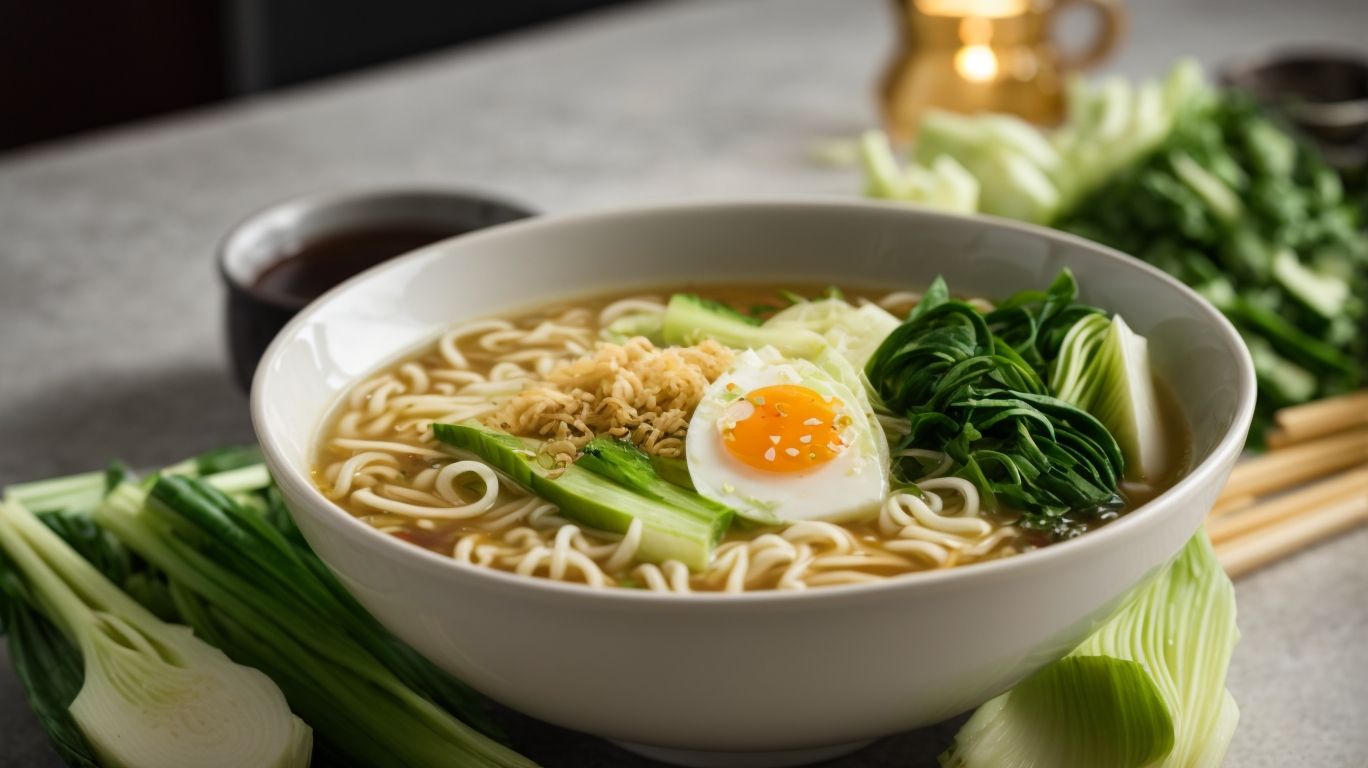
Credits: Poormet.Com – Gregory White
Adding bok choy to ramen enhances both the flavor profile and nutritional value of the dish, providing a unique texture and bringing a healthy twist to this umami-packed meal.
Incorporating bok choy in ramen not only introduces a delightful crunch but also adds a verdant element that elevates the overall dining experience. The robust umami notes of the broth blend harmoniously with the subtle sweetness and slight bitterness of the bok choy leaves. This cruciferous vegetable is rich in essential nutrients like vitamins A, C, and K, along with minerals such as calcium and potassium, turning a simple ramen bowl into a nutritionally balanced meal.
How to Prepare Bok Choy for Ramen?
Preparing bok choy for ramen involves selecting fresh produce, cleaning and chopping the leaves, and infusing them with aromatic ingredients like miso paste, garlic, and ginger.
Choosing Fresh Bok Choy
When selecting bok choy for your ramen dish, opt for fresh baby bok choy or full-size bok choy to ensure a crispy texture and maximize the intake of vitamin K and calcium.
When choosing baby bok choy, look for vibrant green leaves and firm stalks; this smaller variety tends to be more tender and mild in flavor. On the other hand, full-size bok choy, also known as Shanghai bok choy, has a stronger flavor and holds up well in soups and stir-fries.
Baby bok choy is also packed with antioxidants and fiber, while full-size bok choy provides a substantial amount of vitamin C and folate. Incorporating both types into your ramen dishes can offer a delightful mix of textures and flavors, enhancing the overall nutritional profile of your meal.
Cleaning and Preparing Bok Choy
Cleaning and preparing bok choy involves rinsing the leaves thoroughly, chopping them into desired sizes, and incorporating them into the cooking process with aromatic elements like garlic and ginger.
After rinsing, ensure to separate the leaves from the stalks as they have different cooking times.
When chopping, aim for uniform cuts to ensure even cooking.
To infuse flavor, heat oil in a pan and sauté minced garlic and ginger before adding the bok choy.
By doing so, you enhance the taste profile of the dish and draw out the delicate flavors of the bok choy.
How to Cook Bok Choy for Ramen?
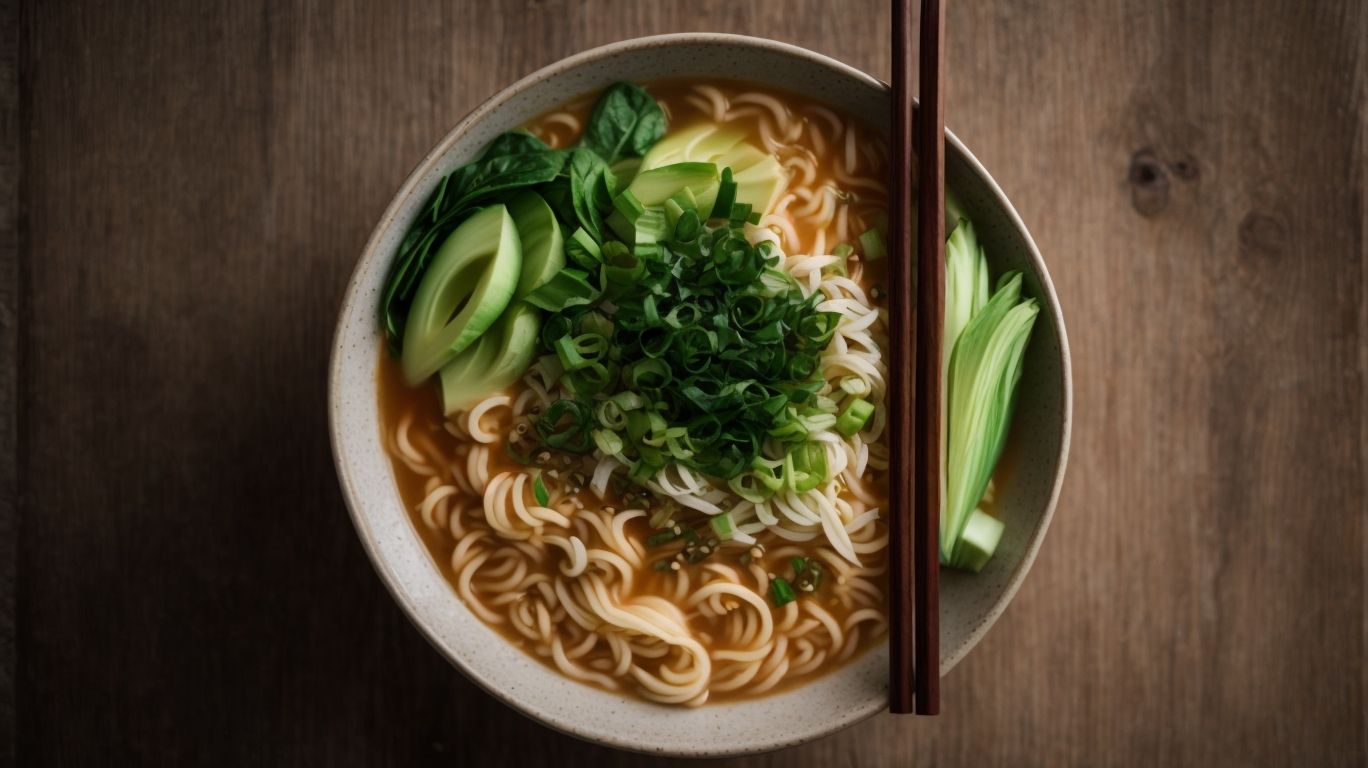
Credits: Poormet.Com – Ryan Robinson
Cooking bok choy for ramen offers various methods like stir-frying, boiling, or steaming to infuse the vegetable with savory flavors and pair it with mushrooms, vegetables, and aromatic sesame oil.
In stir-frying bok choy for ramen, heat sesame oil in a wok, add sliced mushrooms, bok choy, and other veggies, and stir-fry until tender-crisp. Boiling bok choy involves blanching in boiling water for a few minutes before adding to ramen broth.
Steaming bok choy for ramen can retain its crunchiness and nutrients. Place bok choy in a steamer basket over boiling water, cover, and steam until tender. These methods add depth and texture to your ramen bowl.
Stir-frying Bok Choy
Stir-frying bok choy for ramen involves quick cooking in a hot pan with sesame oil and assorted vegetables to create a dish bursting with flavor and texture.
When stir-frying bok choy for ramen, the process starts by heating up a wok or large skillet on high heat. Once the pan is hot, add sesame oil, garlic, and ginger to infuse the oil with aromatic flavors. Next, toss in the bok choy, ensuring each piece makes contact with the hot surface for that perfect sear and crunch.
The secret to successful stir-frying lies in constant movement. Keep the ingredients moving swiftly around the pan to prevent burning and ensure even cooking. As the bok choy starts to wilt slightly, add in your other vegetables, such as bell peppers, carrots, and mushrooms, for a colorful and nutritious medley.
Boiling Bok Choy
Boiling bok choy in broth for ramen imparts a subtle flavor to the dish, enhancing the overall taste profile when combined with noodles, miso paste, and fresh scallions.
When simmered gently in the savory broth, the bok choy leaves soften while still retaining a delightful crunch, adding a contrast of textures to each spoonful of the ramen. The noodles, whether classic wheat or chewy udon, soak up the umami-rich flavors of the broth, creating a satisfying base for the dish.
The incorporation of miso paste introduces a depth of savory notes that beautifully intertwine with the sweetness of the bok choy and the richness of the broth, resulting in a complex and well-rounded taste. To finish, the addition of thinly sliced scallions provides a fresh, aromatic element that brightens the overall composition of the ramen.
Steaming Bok Choy
Steaming bok choy for ramen preserves its natural texture and nutrient content, offering a healthy and vibrant addition to the dish alongside other vegetables.
Steaming bok choy is a cooking technique that not only helps to maintain the vegetable’s firm texture but also locks in its essential nutrients, ensuring that every bite is both delicious and nutritious. By steaming bok choy, you are able to retain its vibrant green color and crispness, adding visual appeal to your ramen bowl. This method of cooking also ensures that the bok choy maintains its structural integrity, giving a pleasant crunch to each mouthful. Steaming is a gentle cooking process that helps to keep the overall healthiness of the dish intact, as it doesn’t require additional fats or oils.
Tips for Cooking Bok Choy for Ramen
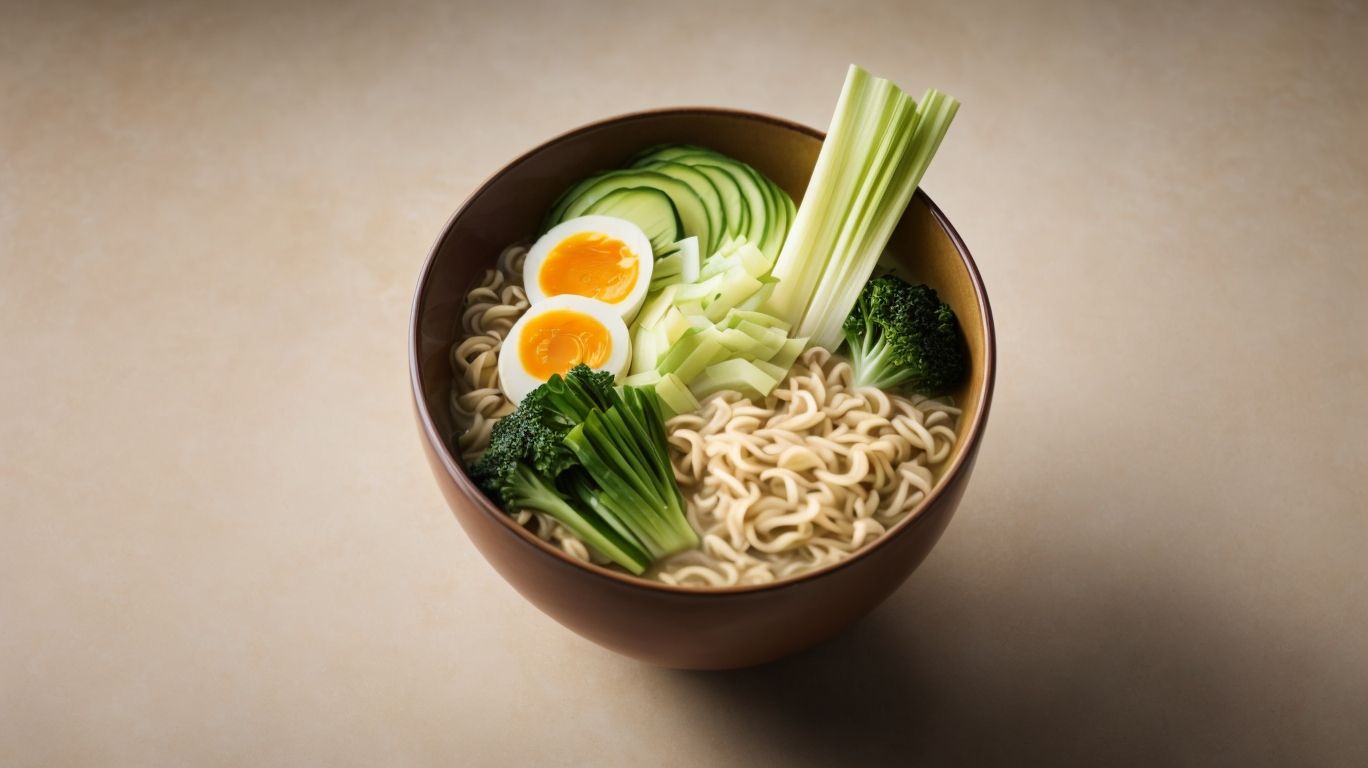
Credits: Poormet.Com – Noah Hall
When cooking bok choy for ramen, remember to enhance its flavor profile with ingredients like chili, soy sauce, and other umami-rich additions to create a satisfying and aromatic dish.
For a delectable twist, consider sautéing bok choy in garlic-infused oil before adding it to your ramen broth. The rich essence of garlic complements the earthy flavors of bok choy beautifully.
A sprinkle of toasted sesame seeds or a dash of sesame oil can elevate the nutty undertones of bok choy, adding complexity to the overall taste profile of the dish.
- Experiment with different types of chili, such as sriracha or gochujang, to find the right balance of heat and sweetness for your palate.
- When seasoning with soy sauce, opt for low-sodium varieties to control the saltiness of the dish without compromising on that quintessential umami kick.
Add Bok Choy at the Right Time
Adding bok choy at the right time in the cooking process for ramen ensures that the vegetable retains its crunchiness and absorbs the flavors of the dish, especially when paired with garnishes like sweet rice wine.
Timing is crucial when incorporating bok choy into your ramen recipe. Overcooked bok choy loses its crispness and vibrant green color, diminishing both the texture and visual appeal of the dish. By adding it towards the end of the cooking process, you maintain its crunchiness while allowing it to soak up the savory broth, enhancing the overall flavor profile. To elevate the taste further, consider drizzling some sweet rice wine over the bok choy as a finishing touch. The subtle sweetness of the wine complements the earthy notes of the vegetable, creating a harmonious balance of flavors in your bowl of ramen.
Don’t Overcook Bok Choy
Avoiding overcooking bok choy in ramen is crucial to preserving its crisp texture and vibrant color, ensuring that the vegetable remains a delightful addition to the dish without becoming mushy.
When cooking bok choy for ramen, it is important to strike the right balance. Overcooking can lead to a loss of that satisfying crunch that bok choy brings to the dish, while undercooking can result in a raw taste and tough texture. Keep a close eye on the bok choy while it simmers in the broth – it only needs a few minutes to cook. You want it to be tender yet still retain a slight bite, offering a contrast in texture to the other components of the dish.
Add Flavorful Ingredients
Infusing ramen with flavorful ingredients like mushrooms, garlic, and ginger adds depth to the dish, enhancing the umami quotient and providing a satisfying culinary experience.
Each of these ingredients brings its unique flavor profile to the bowl of ramen, creating a harmonious blend of earthy, aromatic, and spicy notes.
- Mushrooms contribute a rich, savory taste and a meaty texture, elevating the overall heartiness of the dish.
- On the other hand, garlic infuses a pungent sweetness while adding complexity to the broth.
- Ginger, with its subtle heat and warmth, balances out the flavors and brings a refreshing zing to the palate.
Serving and Enjoying Bok Choy Ramen
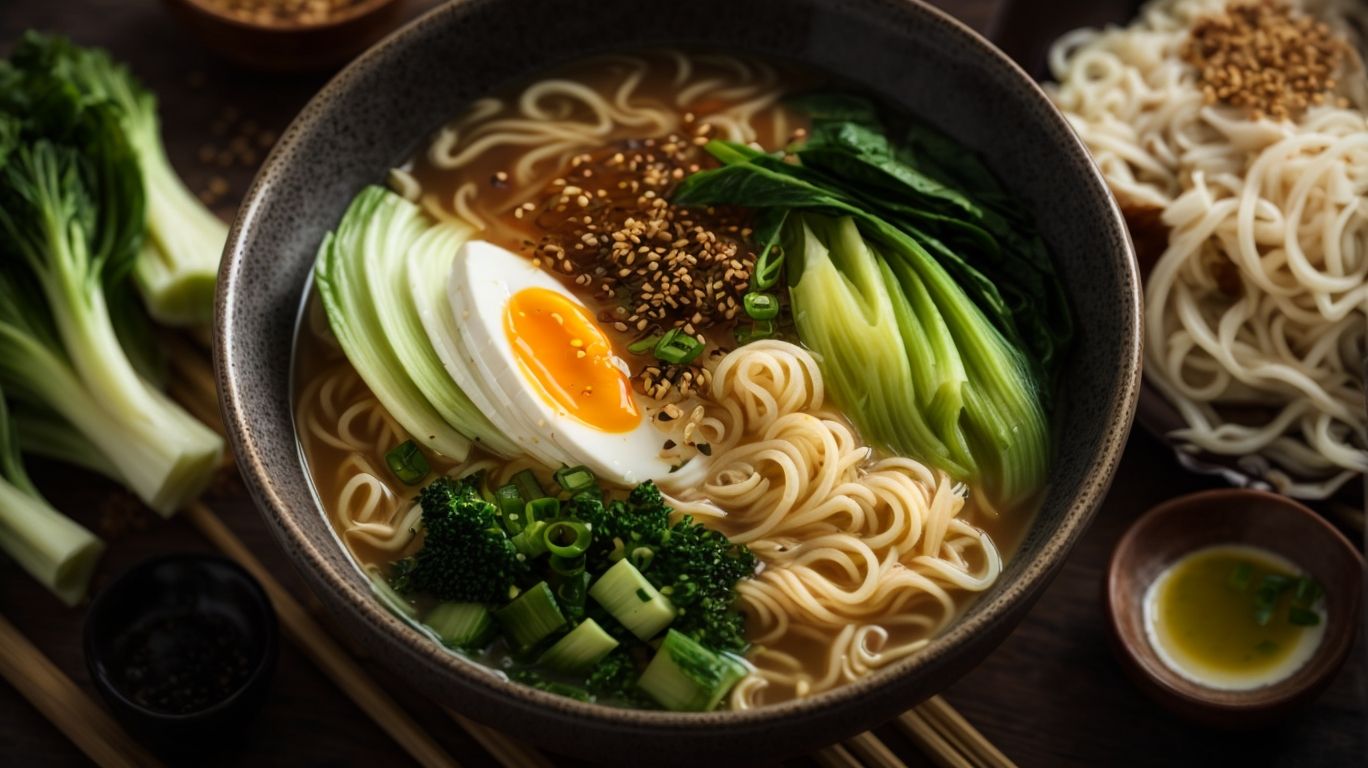
Credits: Poormet.Com – Kyle Williams
Serving and enjoying bok choy ramen is a delightful experience, especially when garnished with fresh cilantro and a sprinkle of red pepper flakes for added color and flavor.
When presenting this dish, consider using a deep bowl to showcase the vibrant colors of the ingredients. Start by arranging the cooked bok choy neatly, allowing its green leaves to stand out against the steaming noodles. Next, carefully pour the piping hot broth over the top, ensuring that the rich flavors blend harmoniously. For an extra touch of visual appeal, add a few slices of soft-boiled egg and a drizzle of sesame oil.
To elevate the taste profile, consider serving the ramen with a side of tangy kimchi or a soy sauce-based dipping sauce. These additions can complement the umami flavors of the broth while providing contrasting textures. Don’t forget to encourage diners to mix the ingredients together before indulging, allowing the flavors to meld and create a truly satisfying culinary experience.
Other Creative Ways to Use Bok Choy in Ramen Dishes
Exploring other creative ways to incorporate bok choy into ramen dishes opens up a world of possibilities for creating unique flavor combinations that are both sweet, savory, light, and refreshing.
Bok choy’s crisp texture and mild flavor make it a versatile addition to ramen dishes, adding a delightful crunch and subtle earthiness to the broth.
Pairing bok choy with ingredients like shiitake mushrooms, ginger, and miso can elevate the umami notes in your ramen, offering a rich and satisfying taste experience.
For a refreshing twist, consider adding bok choy to a cold ramen salad, tossing it with sesame dressing, shredded carrots, and edamame for a vibrant and nutritious meal.
Frequently Asked Questions
What is bok choy and how do I cook it for ramen?
Bok choy is a type of Chinese cabbage that is commonly used in ramen dishes. To cook it for ramen, simply blanch the bok choy in boiling water for about 2 minutes before adding it to your ramen.
Can I use any type of bok choy for ramen?
While there are different varieties of bok choy, it is best to use baby bok choy for ramen dishes. This type of bok choy has a more tender texture and is easier to cook.
How should I prepare bok choy before using it in ramen?
Before adding bok choy to your ramen, make sure to wash it thoroughly and remove any dirt or debris. You should also trim off the ends of the bok choy stalks before cooking.
What are some other ways to cook bok choy for ramen?
Aside from blanching, you can also sauté bok choy in a pan with some oil and garlic for a delicious and flavorful addition to your ramen. You can also roast bok choy in the oven for a crispy and unique texture.
How much bok choy should I use for one serving of ramen?
It is recommended to use about 1-2 cups of bok choy per serving of ramen. However, you can adjust the amount to your personal preference and taste.
Can I freeze bok choy for future use in ramen?
Yes, you can freeze bok choy for future use in ramen. Just make sure to blanch it first before freezing and store it in an airtight container or freezer bag. When ready to use, simply thaw and add it to your ramen as desired.


